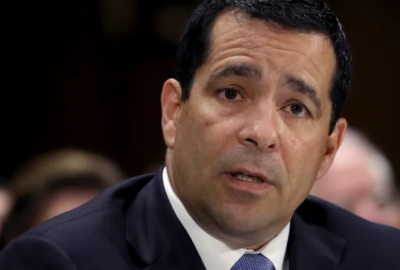

To maintain readiness and get better insights into its supply chain, Naval Supply Systems Command says it needs deeper relationships with its biggest vendors.
For decades, the Navy’s relationship with its spare parts suppliers has been relatively straightforward: when the service needs a batch of items, it places an order, and industry fulfills it.
But officials at Naval Supply Systems Command say they’ve come to realize that arms-length transactional approach doesn’t give the Navy nearly enough insight into the health of its supply chain, nor does it give vendors enough of a view into the military’s long-term needs.
So for at least its most important suppliers, NAVSUP says it’s begun to interact with them on a more “strategic” basis. Thus far, it’s identified nine large contractors to be part of what the command calls its Strategic Supplier Relationship Management (SSRM) program.
The engagements typically start with high-level discussions between NAVSUP and a given company at the executive level, said Karen Fenstermacher, NAVSUP’s executive for strategic initiatives.
“During that strategic engagement, we identify what are those efforts or initiatives that we want to work on together,” she said in an interview for Federal News Network’s On DoD. “That could be more robust joint forecasting as an example, or it could be establishing a longer-term contractual arrangement, or the pursuit of additive manufacturing. Those are the kinds of conversations we want to have throughout any given year, with a focus to finish on those strategic initiatives that we set out to partner on. That’s what’s different than many of our other suppliers, because of the depth of activity and that consistent communication and strategic engagement.”
Fenstermacher said it wouldn’t be practical for the Navy to hold those sorts of detailed discussions with all 1,400 of the vendors that supply it with parts and other items on a regular basis. But for the ones it’s identified as most vital to the service’s ongoing readiness, the goal is to create a positive “feedback loop” of information.
“As an example, [we can] share with them what we believe the future to be as far as the demand for a particular item. Is this particular weapon system set to sunset in a couple of years? If not, how long is this particular weapon system going to have to be sustained? And so providing that insight to the future enables the supplier to better be able to manage the industrial base,” she said. “And from that, what I’m looking for from them is, what are the challenges in the industrial base? What are the issues they see that could impact us in sustaining this particular item over, say, a 10 year horizon? What do you see as issues, and how do we strategically become proactive in collectively solving those issues?”
SSRM is still in its early stages. The first engagements with large vendors started in January, but Fenstermacher said it has already produced some tangible results. For example, the number of unfilled orders from the nine vendors involved in the program has dropped about 5 percent compared to the same time a year ago.
NAVSUP is still assessing whether to add more vendors to the formal program, but in the meantime, it’s also looking at ways to communicate some of the same types of demand forecasts to some of its smaller suppliers.
“Establishing a more automated customer relationship management toolset is one way that we can more effectively push information out, not just to these nine, but to the entire supply base. It would also give them the opportunity to be pulling real-time information about how we see the world, whether that’s specific to their particular area or across a larger commodity base,” Fenstermacher said. “The other avenue that we’re pursuing is having either a quarterly or yearly Industry Day where we’re inviting in our suppliers and providing information on what we see as the future. We want to be sharing information on how we see the world over the next five to seven years — not only including demand, but where we see the budgets going. That’s proved valuable in some of the other DoD agencies and services, and it’s something we’re seriously considering for the fall timeframe.”
Copyright © 2025 Federal News Network. All rights reserved. This website is not intended for users located within the European Economic Area.
Jared Serbu is deputy editor of Federal News Network and reports on the Defense Department’s contracting, legislative, workforce and IT issues.
Follow @jserbuWFED

